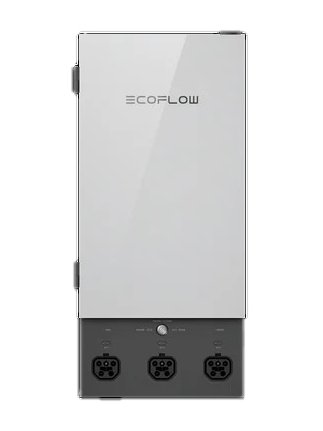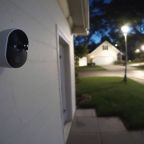Everyone hates losing power during storms or outages. The EcoFlow Smart Home Panel 2 promises to change that by offering a reliable backup solution. This article will explore how it keeps your lights on and devices charged without hassle.
Stay tuned for an insightful review.
Key Takeaways
- The EcoFlow Smart Home Panel 2 can manage up to twelve circuits, making it incredibly efficient for prioritizing home energy use during power outages. This feature ensures that critical systems like refrigeration or Wi-Fi routers keep running smoothly.
- With a high-capacity Delta Pro Ultra Battery of over 6,144Wh, the system can power an average house for more than 12 hours without heating or air conditioning. This substantial runtime is crucial for maintaining household operations during most short-term blackouts.
- Installation of the EcoFlow Smart Home Panel 2 requires professional assistance. Still, once in place, it offers simple and direct control through both iOS and Android apps. This allows homeowners to monitor energy consumption easily and create customized outage plans from their smartphones.
- The device integrates Artificial Intelligence (AI) to optimize electricity usage efficiently by learning power consumption patterns and predicting future needs. AI also assists in managing circuit breaker controls remotely for enhanced home energy efficiency.
- Despite its advanced technology and benefits, potential users should consider the higher upfront costs and need for professional installation when deciding to acquire the EcoFlow Smart Home Panel 2. These factors might influence their overall decision based on budget concerns or home upgrade preferences.
EcoFlow Smart Home Panel 2: An Overview
The EcoFlow Smart Home Panel 2 stands at the forefront of seamless home energy integration, merging cutting-edge technology with user-friendly features. It marks a significant leap forward in managing and optimizing household power usage, offering homeowners a smarter way to connect their lives.
Key features and capabilities
EcoFlow Smart Home Panel 2 offers flexibility and control to users by accommodating up to twelve circuits. This feature makes it perfect for ensuring essential circuits in the home are always powered.
With electrically controlled circuit breakers, users can switch circuits on and off remotely, adding a layer of convenience and efficiency. There’s also a manual switch for emergencies or specific needs that allows for immediate battery kick-in.
This system stands out with its compatibility across both iOS and Android platforms, allowing homeowners to monitor power usage directly from their smartphones. Setting schedules becomes hassle-free, enabling optimized battery use during peak electricity rates to save costs effectively.
Moreover, an innovative outage plan can be created within the app, letting users decide which circuits remain active during power outages based on their priorities. This level of customization ensures that power is utilized where it’s most needed without wasting resources.
Installation process and ease of use
Installing the EcoFlow Smart Home Panel 2 requires professional help, but its usage becomes remarkably straightforward once set up. Here’s a breakdown focusing on the installation process and how user-friendly the panel is after installation.
- Schedule a professional electrician: Since professional installation is necessary, your first step is to hire a certified electrician experienced in handling solar panels and backup power systems.
- Review your home’s power needs: The electrician will assess your home’s energy requirements, helping to ensure the Smart Home Panel 2 aligns with your electricity needs, including backup power and EV charging.
- Prepare the site: Space needs to be prepared depending on where you plan to install it, whether next to your solar array or as part of your home’s central power system. This could involve clearing an area in the garage or alongside existing utilities.
- Install and connect: Your electrician will handle the heavy lifting, securely mounting the panel and connecting it to your home’s wiring system according to the provided EcoFlow Smart Home Panel wiring diagram. They’ll also integrate it with any existing renewable energy sources, like rooftop solar.
- Set up the app: After physical installation, download the EcoFlow app on your smartphone or tablet. Though complex, taking time with this step allows you access to many of EcoFlow’s advanced features like outage planning and monitoring energy consumption.
- Customize settings: With help from your electrician or through customer support, customize settings based on your home’s energy consumption patterns, optimizing for factors like peak usage hours or prioritizing certain appliances during an outage.
- Create an outage plan: Use AI-driven insights from within the app to build a comprehensive blackout strategy that automatically kicks in when there is a disruption in grid electricity supply.
- Test run: Before considering everything set up, conduct a trial run by simulating an outage condition or switching between grid and backup power sources to make sure transitions happen smoothly without interrupting power flow.
- Ongoing maintenance checks: Finally, routine inspections are crucial for long-term efficiency—check connections, keep software updated via the app and monitor battery health within its user interface for peace of mind regarding uninterrupted service.
Though initially seeming complex due to sophisticated technology and requiring professional installation support upfront costs linked with both product purchase and setup fees are offset by its extensive usability features designed for ease following setup completion.
The Power of EcoFlow Smart Home Panel 2
The EcoFlow Smart Home Panel 2 revolutionizes home energy use, delivering unmatched runtime and capacity. It ensures a smooth transition to backup power, making blackouts a thing of the past.
Runtime and capacity
With a capacity of over 6,144Wh, the EcoFlow Delta Pro Ultra stands out by powering a typical house without AC or heating for just over 12 hours. This impressive runtime ensures that households remain operational through most short-term power outages.
The system’s large energy reserve comes from high-quality lithium iron phosphate (LFP) batteries, which are known for their durability and efficiency in storing solar power.
EcoFlow Smart Home Panel 2 further enhances home connectivity by accommodating up to twelve circuits. This capability allows homeowners to select which parts of their house remain powered during an outage, optimizing the use of stored energy.
Users can prioritize essential systems like refrigerators, lighting, and Wi-Fi routers to keep their homes functional and comfortable even when the grid fails.
Uninterrupted power switchover
The EcoFlow Smart Home Panel 2 ensures your home never skips a beat in power supply. Thanks to its advanced design, the moment your main power source falters, it seamlessly switches over to battery backup without interruption.
This feature is critical during unexpected power outages or times of high energy demand.
EcoFlow’s technology supports this smooth transition by utilizing Wi-Fi and Bluetooth-enabled batteries like the DELTA Pro Ultra. With a capacity of 6.1 kWh and a powerful output of 7.2 kW, these batteries guarantee that everything from your central air conditioner to your USB-C devices continues running without a hitch, making sure life goes on as usual even when the grid does not.
EcoFlow Smart Home Panel 2’s Advanced Technology
The EcoFlow Smart Home Panel 2 uses cutting-edge technology to revolutionize how we manage home energy. Its smart features empower users to optimize their power usage with unprecedented precision and control.
The role of AI in power management
Artificial Intelligence (AI) plays a pivotal role in optimizing power management within the EcoFlow Smart Home Panel 2, making energy use at home more efficient. AI analyzes your power consumption patterns and predicts future needs.
This ensures that devices run on battery power during peak electricity rates, saving you money. Based on these predictions, it also decides the best times to recharge the battery, further reducing energy costs.
Moreover, AI contributes to a smarter grid integration by controlling circuit breakers remotely. This feature allows for precise management of which parts of your home receive power and when.
By doing so, it stabilizes the load on the electric grid, especially during high-demand periods or outages, enhancing overall energy efficiency and reliability without manual oversight.
Building an outage plan with EcoFlow
Creating an outage plan with EcoFlow ensures you stay powered during emergencies. This strategy involves prioritizing circuits to keep essential systems running.
- Evaluate your power needs: Start by listing down critical appliances and systems that you cannot do without during a power outage, such as refrigerators, medical equipment, or home security systems. This step is crucial for determining which circuits to prioritize.
- Utilize the EcoFlow app: The mobile application serves as a central management tool. It allows users to configure their preferences for which circuits remain active during an outage. Adjusting your settings becomes straightforward through the app.
- Identify standby power requirements: Calculate the energy consumption of your priority devices. Knowing the kilowatt-hour usage helps in allocating backup power effectively to ensure essential appliances keep running without overloading the system.
- Specify circuit priority within the app: With the information on power needs and device importance, set up circuit priorities in the EcoFlow app. High-priority items receive power first, ensuring optimal use of available energy.
- Plan for EV charging station usage: If you own an electric vehicle, decide how critical charging is during an outage. Given that EV charging can be a significant power draw, consider setting it at a lower priority unless necessary for emergency travel.
- Incorporate renewable sources: If your setup includes solar panels or other clean energy sources, configure them in your outage plan to recharge backup batteries during daylight hours, enhancing sustainability and extending runtime.
- Regularly update your plan: As your lifestyle or household electronics change, revisit and adjust your outage plan accordingly through the EcoFlow app to reflect new priorities or additional devices needing backup power.
This approach not only guarantees safety and convenience but also maximizes efficiency by intelligently managing limited backup resources during extended outages or emergencies.
EcoFlow Smart Home Panel 2 vs. Delta Pro Ultra
The EcoFlow Smart Home Panel 2 and the Delta Pro Ultra both offer cutting-edge solutions to energy management, but they cater to different needs and preferences. This section dives into their features and performance, highlighting what sets them apart in the smart power ecosystem.
Comparisons and contrasts
Smart Home Panel 2 caters specifically to twelve circuits, making it an ideal sub-panel for essential power needs within a home. On the contrast, Delta Pro Ultra offers a comprehensive whole-home backup solution.
This fundamental difference highlights Smart Home Panel 2’s focus on critical circuitry support versus Delta Pro Ultra’s extensive coverage. Furthermore, with a price tag of $1,899, Smart Home Panel 2 presents itself as a more pocket-friendly option compared to Delta Pro Ultra’s battery, priced at $5,799, and additional batteries, priced at $3,299 each.
Smart Home Panel 2 edges out with its capability to monitor power usage actively and schedule recharging times—a feature not explicitly stated by Delta Pro Ultra. This functionality proves vital for homeowners seeking detailed control over their energy consumption and efficiency in managing power reserves during outages or high-demand periods.
Also noteworthy is Smart Home Panel 2, offering an all-inclusive bundle at $7,499 without a similar package option from Delta Pro Ultra, indicating EcoFlow’s commitment to providing comprehensive solutions tailored for varying household requirements and budgets.
Performance review
The EcoFlow Smart Home Panel 2 shines in its performance, especially during challenging situations like simulated blackouts. It springs to action within seconds, showcasing its reliability and efficiency.
This rapid response can be further optimized, reducing the time it takes for power to kick in at the expense of a minimal increase in power consumption. Such flexibility allows users to tailor their energy use according to their needs, ensuring they are never left in the dark.
Connecting solar panels directly to the Delta Pro Ultra enhances energy storage efficiency. Unlike systems that undergo multiple conversions before storing solar energy, this streamlined connection minimizes loss and maximizes usability.
By integrating seamlessly with renewable sources, EcoFlow’s solution presents an eco-friendly alternative for sustainable living without compromising on convenience or performance.
Cost Analysis of EcoFlow Smart Home Panel 2
Exploring the cost of owning an EcoFlow Smart Home Panel 2 reveals both its initial price tag and long-term savings. This analysis will guide you through upfront expenses, financing options, and potential incentives that can offset costs over time.
Upfront costs
Investing in the EcoFlow Smart Home Panel 2 introduces substantial upfront costs that potential buyers should prepare for. The Delta Pro Ultra battery kicks off at $5,799, with extra batteries available for an additional $3,299 each.
To integrate this advanced system into a home, purchasers must also account for the Smart Home Panel itself, priced at $1,899. This investment not only covers the equipment but also necessitates professional installation to ensure optimal functionality and safety.
Given these initial expenses, homeowners need to weigh these costs against the long-term benefits of having a reliable off-grid power solution. The setup fundamentally changes how electricity is distributed within a home, offering increased control and efficiency in energy use.
Despite the sticker shock, some might experience upon reviewing these prices, understanding the value of uninterrupted power supply and smart management capabilities can make it easier to justify this upfront financial commitment.
Financing and incentives
Financing the EcoFlow Smart Home Panel 2 can make the transition to smart power management smoother for many households. Various incentives also help reduce the overall cost, making it a more accessible investment for eco-conscious consumers.
- Upfront Payment Options: Buyers have the choice to pay for the EcoFlow Smart Home Panel 2 in full upfront. This direct approach saves on any potential interest that might accumulate with financing options but requires a significant initial outlay.
- Flexible Financing Plans: EcoFlow offers financing plans for those who are not ready to make a full payment. These plans spread the cost over time, often with low-interest rates, making it easier for homeowners to manage their budgets without delaying their upgrade to smarter energy solutions.
- Federal Solar Investment Tax Credit (ITC): Purchasers of the EcoFlow Smart Home Panel 2 can qualify for federal tax credits if they integrate solar panels into their system. The ITC allows you to deduct a portion of your solar energy system’s cost from your federal taxes, offering significant savings.
- State and Local Incentives: In addition to federal incentives, many states and localities offer additional rebates or tax credits for installing smart energy systems like the EcoFlow Smart Home Panel 2. These programs vary by location but can further lower costs.
- Utility Company Rebates: Some utility companies provide rebates to customers who install energy-efficient systems in their homes. Check with your local provider to see if they offer any rebates or incentives that could apply to your purchase of an EcoFlow Smart Home Panel 2.
- Manufacturer’s Warranty and Potential Savings: With its 5-year warranty, the DELTA Pro Ultra ensures buyers have long-term investment support and protection. While this pertains more directly to one specific product model, warranties like these speak to the overall value offered by modern home energy management solutions.
- Credit Card Rewards or Cash Back: Purchasing an EcoFlow Smart Home Panel on certain credit cards could earn you rewards points or cash back, indirectly reducing the effective cost of the system depending on your credit card’s benefits package.
These financial strategies and incentives contribute significantly towards making smart home panels an attainable goal for many households aiming for sustainability without compromising on modern conveniences.
The EcoFlow App: A Look at Its Features
The EcoFlow App pairs flawlessly with the EcoFlow Smart Home Panel 2, unlocking powerful capabilities for users. This app serves as a monitoring tool that monitors power usage and enables scheduling to optimize energy consumption.
Users benefit from the ability to run their home using battery power during peak electricity rates, ensuring savings on utility bills. The app’s sophisticated feature also allows homeowners to establish an outage plan.
This plan outlines which circuits receive power during an outage, prioritizing them according to the homeowner’s needs. Despite its technical nature, understanding how to leverage these features can significantly enhance a user’s ability to manage home energy effectively.
Crafting an intuitive outage plan becomes straightforward with this application. Users select essential circuits for backup power, ensuring critical systems like refrigeration or medical devices remain operational during power interruptions.
The app’s design may challenge some due to its complex interface; however, those who invest time mastering it will discover a powerful ally in home energy management. With options for real-time monitoring and adjusting settings remotely, control over one’s home environment is never more than a few taps away on any smartphone or tablet device connected with this innovative system.
The EcoFlow Smart Home Panel 2: Pros and Cons

Exploring the strengths and weaknesses of the EcoFlow Smart Home Panel 2 helps users understand what this innovative product offers. It combines smart technology with energy management to redefine home electricity use.
Pros
- Accommodates Twelve Circuits: Can manage essential home circuits efficiently, allowing homeowners to prioritize power distribution during outages.
- Remote Control Breakers: Users can switch circuit breakers on and off remotely, providing convenience and enhanced control over home energy use.
- Manual Battery Activation: Offers the ability to manually activate the battery, ensuring power continuity during unexpected grid failures.
- High Capacity Delta Pro Ultra Battery: With a capacity of over 6,144Wh, it keeps a typical house powered for more than 12 hours without AC or heating.
- Expandable System: The system allows daisy-chaining up to 15 batteries, providing scalability for larger homes or increased power needs.
- Versatile Outlets: Features multiple AC and USB outlets, making it adaptable to various types of devices and charging needs.
- Smart Outage Plan: Utilizes historical data to shut down circuits automatically during a power outage, optimizing battery runtime.
Cons
- Expensive Upfront Costs: The high initial investment might be a barrier for some homeowners considering the Smart Home Panel 2.
- Professional installation Required: Installing the system requires professional help, adding to its overall cost and complexity.
- Potential Technology Obsolescence: As with any tech product, there is a risk that newer models or technologies might render this system outdated in future years.
- Alters Home Electricity Flow: The installation fundamentally changes how electricity is managed within the home, which may require adjustments or additional infrastructure changes.
This analysis provides insight into both the opportunities that EcoFlow Smart Home Panel 2 presents for modernizing home energy systems as well as the considerations potential buyers should keep in mind before making an investment.
Conclusion: EcoFlow Smart Home Panel 2’s Contribution to a New Era of Connectivity
EcoFlow Smart Home Panel 2 marks a significant leap towards modern home energy solutions. Its sleek design, powerful performance, and intelligent technology redefine what we expect from home power management.
Users gain unprecedented control over their electricity usage, ensuring efficiency and reliability during power outages. This device not only brings comfort and convenience into our lives but also propels us into a new era of connectivity and sustainable living.
FAQ
The EcoFlow Smart Home Panel 2 introduces seamless integration with devices like the EcoFlow Delta Pro, offering a unique solution for managing energy from various sources including solar batteries, the power grid, and generators. Its plug-and-play feature simplifies installation, making it user-friendly.
Unlike the Tesla Powerwall and Enphase systems which focus on battery storage and microinverters respectively, the EcoFlow Smart Home Panel 2 excels in versatility by supporting a wide range of inputs such as solar panels, LFP batteries, and even EV chargers through its innovative design.
Absolutely! The panel is equipped with features that allow users to track their energy consumption down to kilowatt-hour precision. This functionality promotes efficient use of resources by identifying potential overcharging or unnecessary power usage.
No, installing this smart home panel is straightforward thanks to its plug-and-play design. It eliminates complicated setup processes typically associated with traditional systems like inverters or transfer switches.
Most standard connections can be made directly using USB-A ports available on the panel itself for smaller devices or through dedicated circuits for larger appliances such as nest cams or flat-rate charging stations for electric vehicles.






